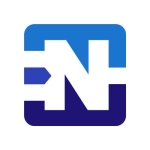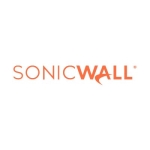What is most valuable?
The configuration support is very good. You can find a lot of configuration samples and troubleshooting tips on the internet, which is very good.
What needs improvement?
You need to have a little bit of knowledge to be able to configure it. Otherwise, it would be very difficult to configure because there is no GUI. The latest software available in the market has a GUI and probably zero-touch provisioning and auto-configuration. All these things are not available in our version. You need to manually go and configure everything in the switch.
In terms of new features, we would definitely want to have URL-based filtering, traffic steering, and probably a little bit steering in the bandwidth based on the per-user level and per-user group. We will definitely need some of these features in the near future.
For how long have I used the solution?
I have been using this solution for the last one and a half years.
What do I think about the stability of the solution?
Stability-wise, it is pretty stable. It is probably not very feature-rich, but whatever features we are using, they are pretty stable.
What do I think about the scalability of the solution?
Scalability-wise, we did not have much problem because we have a single site. If we have two or more sites, and if we want to have a site-to-site VPN and more number of users, we are not sure about the scalability. We will have to go for an updated version of the new product line.
We have close to 80 plus users. We anticipate a huge increase in the number of users and plan to increase the usage of Cisco ASA Firewall. We may have to open a new center in a different city, which will lead to more sites, users, and usage.
How are customer service and technical support?
Their support is good, but the cost of support is very high. Next year onwards, we may not go for technical support because most of the time, they only do the configuration, and the configuration-related information is pretty much available on the internet.
Which solution did I use previously and why did I switch?
Initially, we started with some open-source alternatives, like Opium, but eventually, we thought of moving towards a proven solution. We just did a study. We didn't put the open-source solution into production. One of our customers was basically suggesting us to go with this one, and we went for it. We did not get time to go through, study, and explore different options because we didn't have the bandwidth for testing the complete features of the open-source alternatives. Therefore, we thought of going for a commercial solution. A lot of alternatives are available right now for this solution.
How was the initial setup?
The initial setup was not too complicated. It was good.
What about the implementation team?
We took the help of a reseller for the initial configuration.
What's my experience with pricing, setup cost, and licensing?
The product cost is a little high. It is a little bit on the high side, and it should be a little bit cost-friendly.
What other advice do I have?
I would rate Cisco ASA Firewall a seven out of ten. It needs improvement in terms of a few features and cost-friendliness.
Which deployment model are you using for this solution?
On-premises
Disclosure: My company does not have a business relationship with this vendor other than being a customer.












